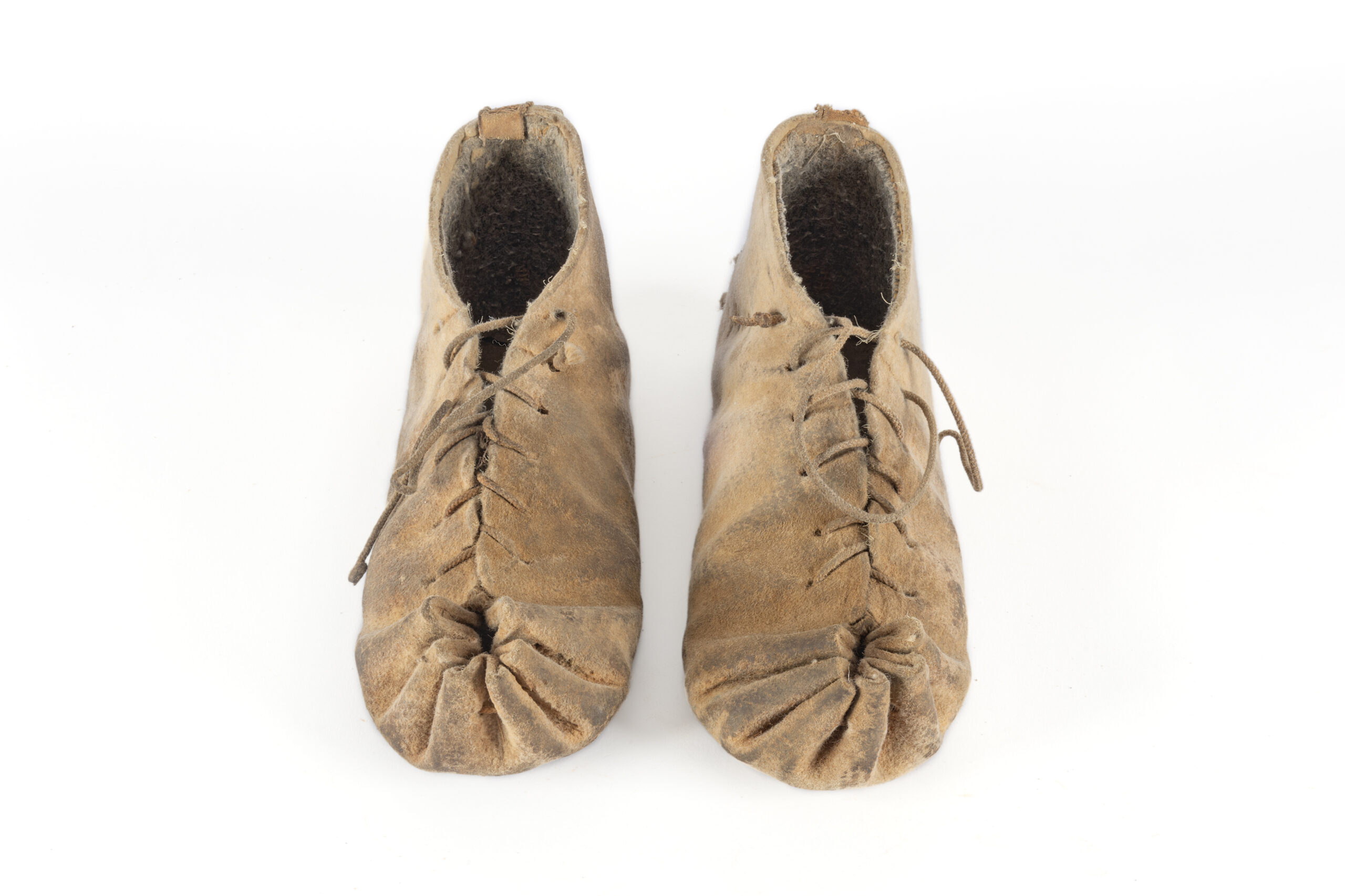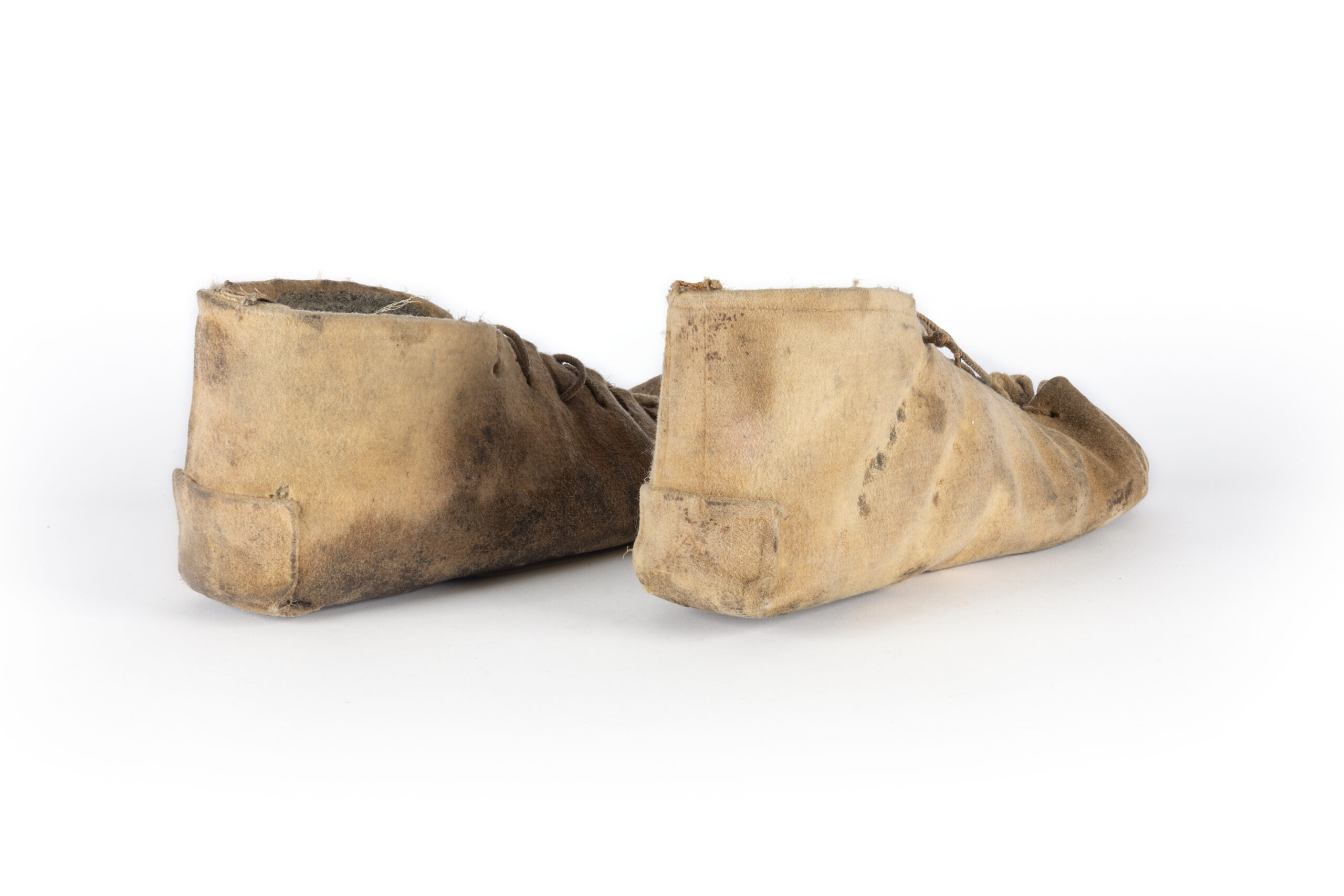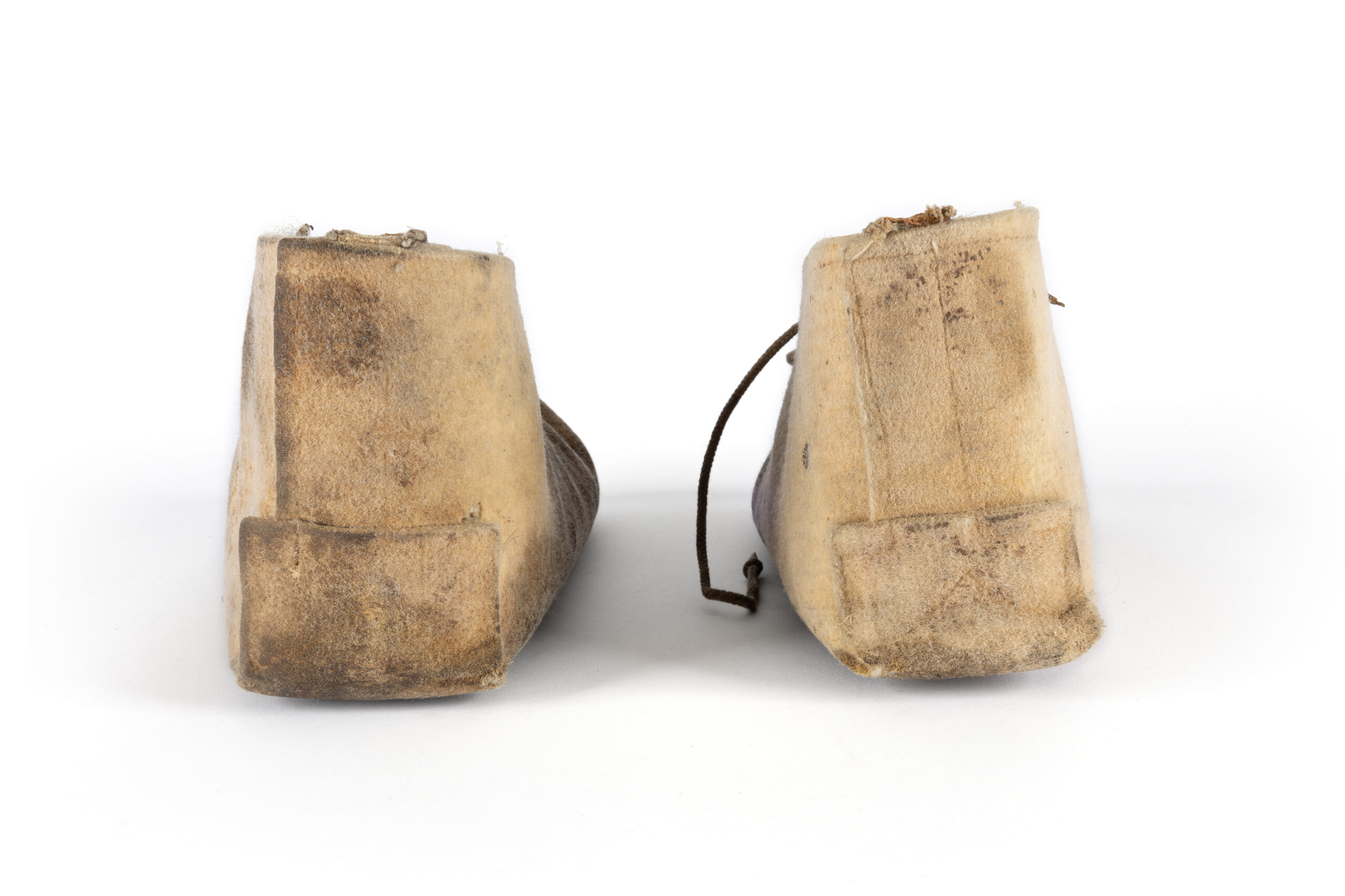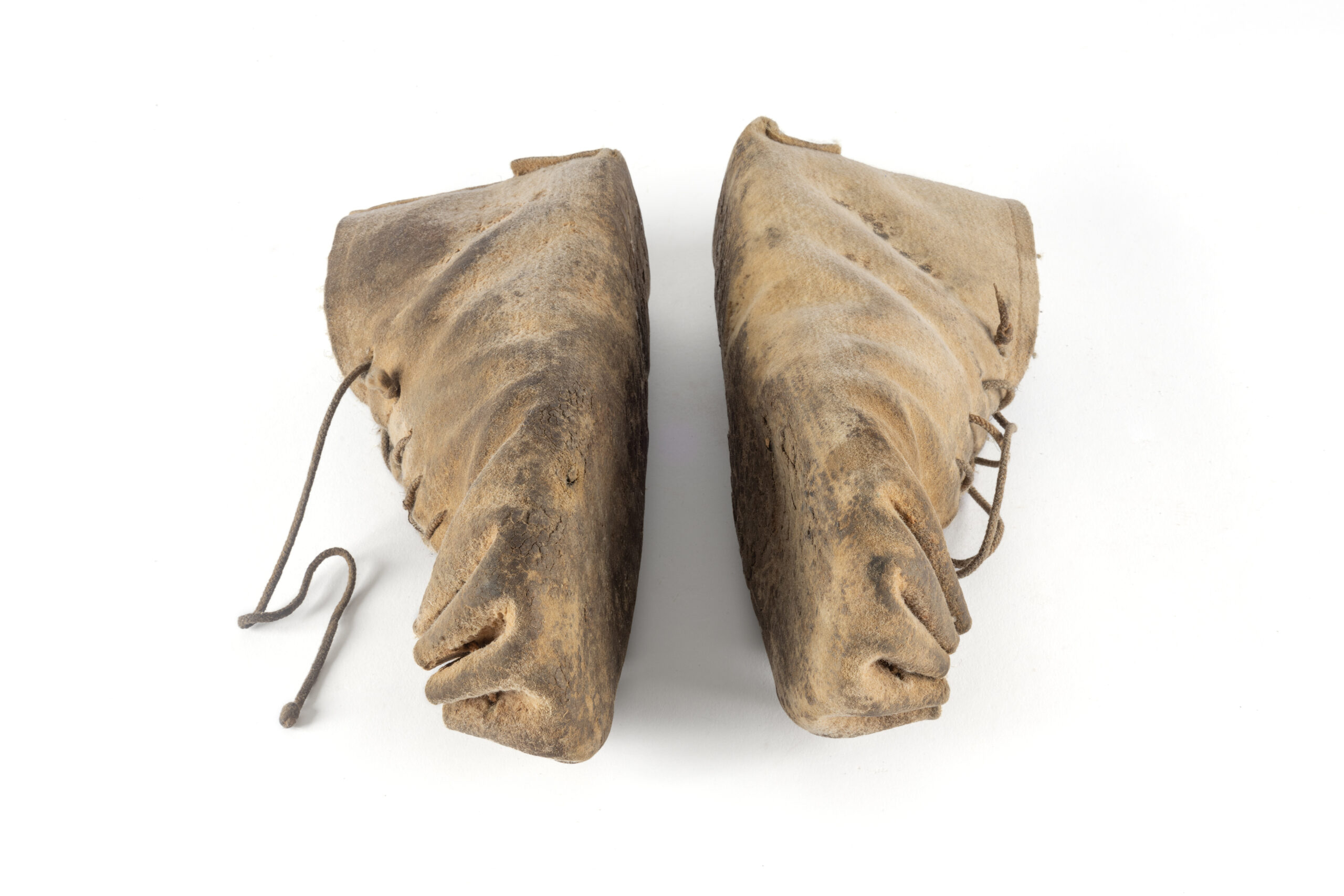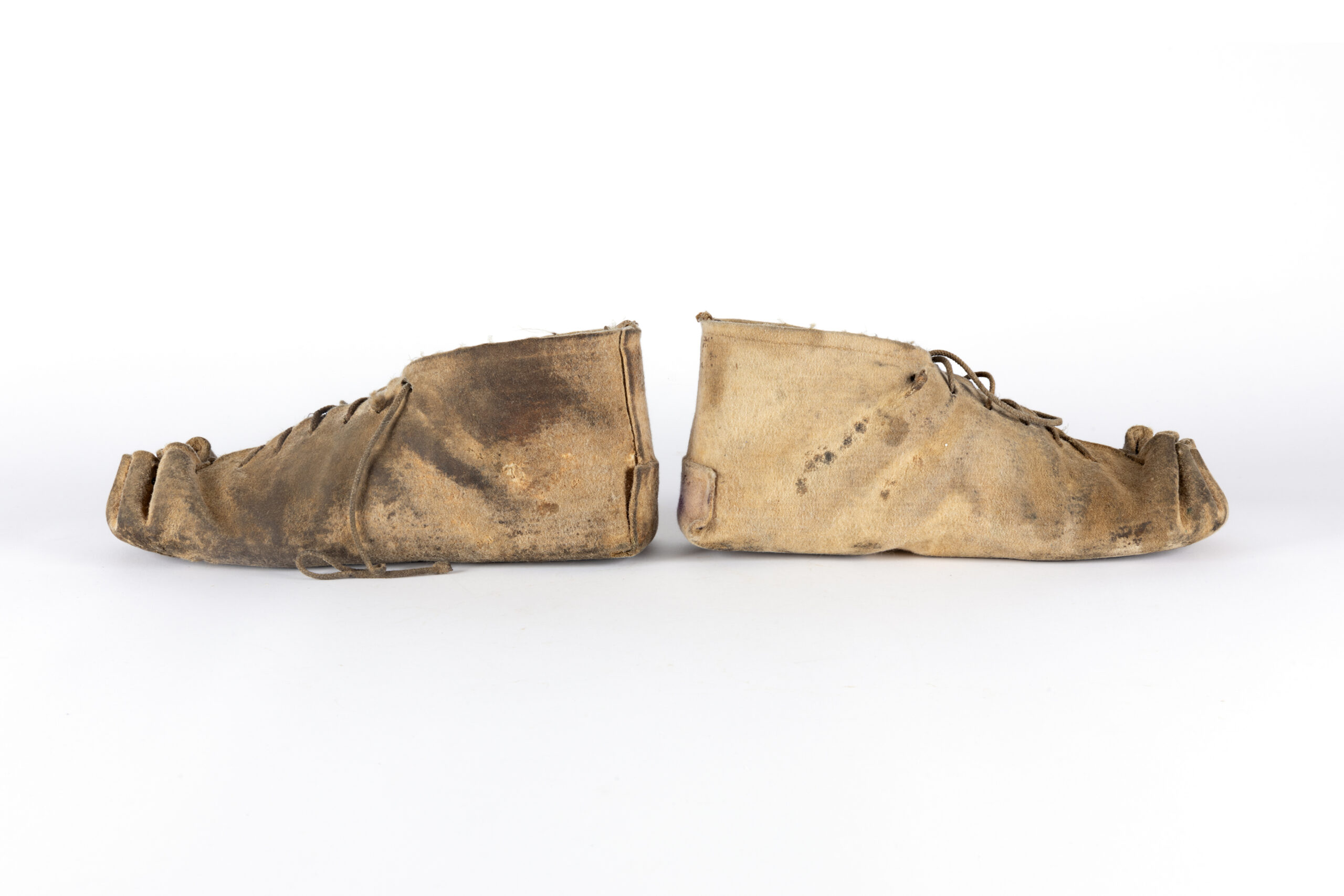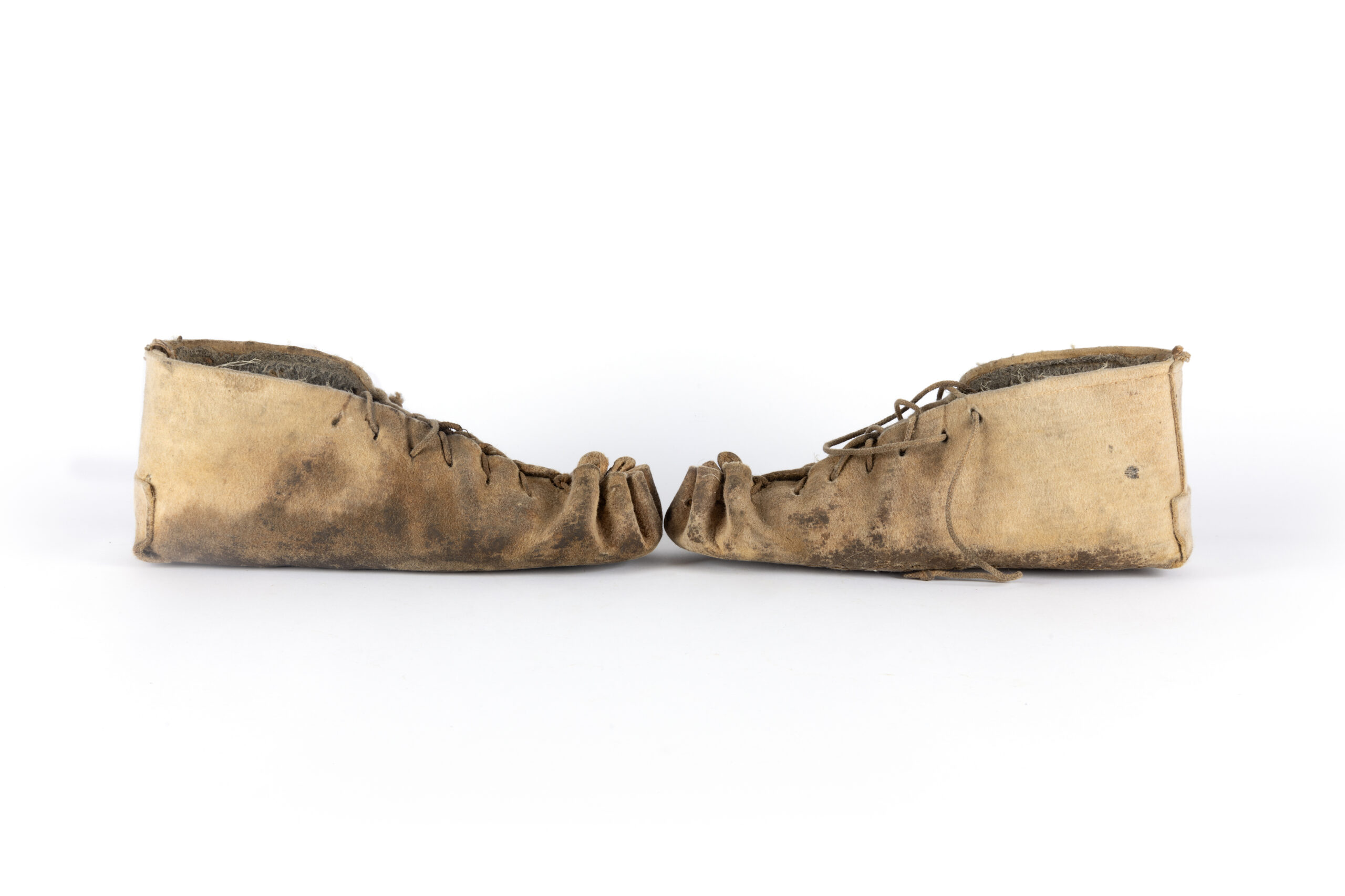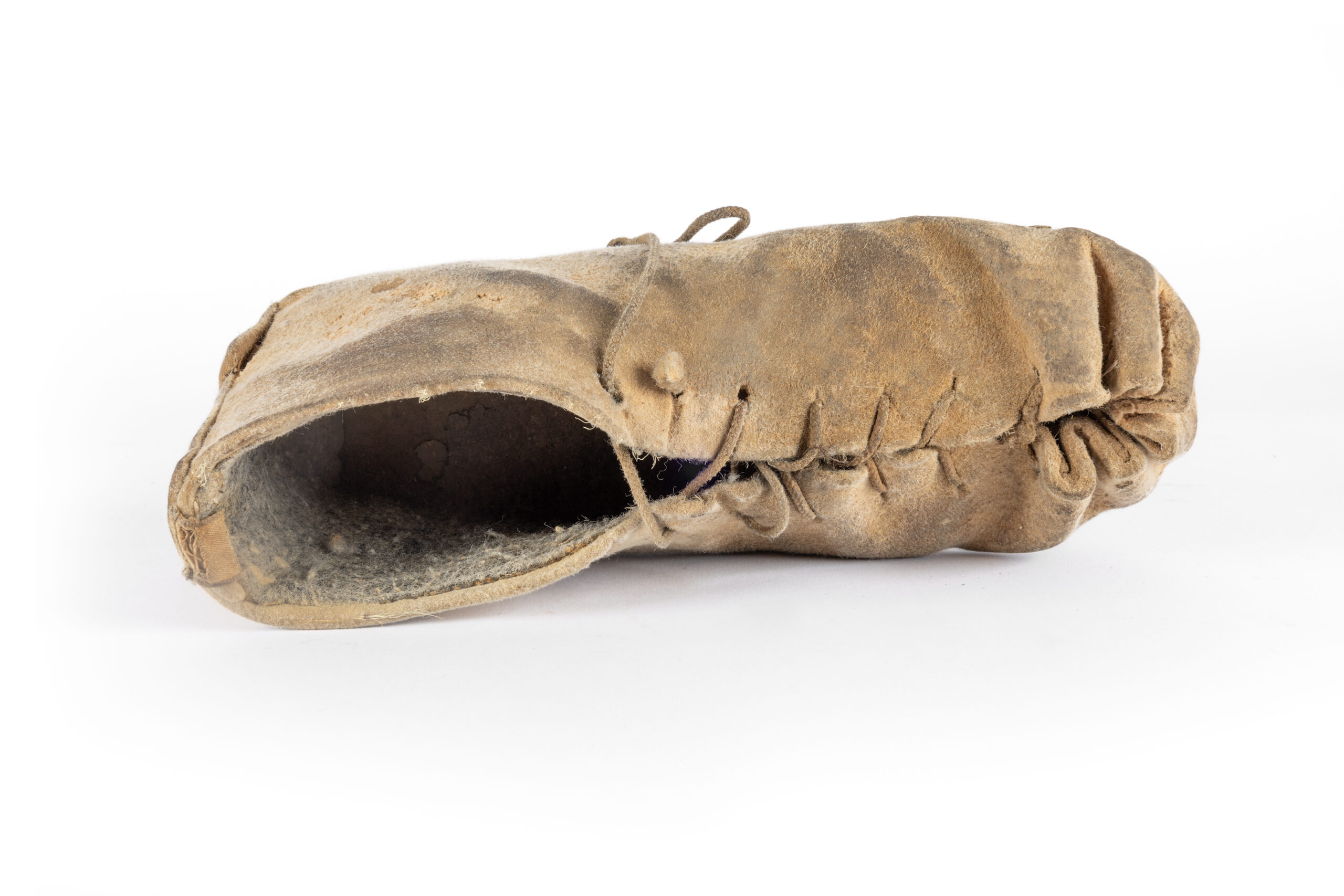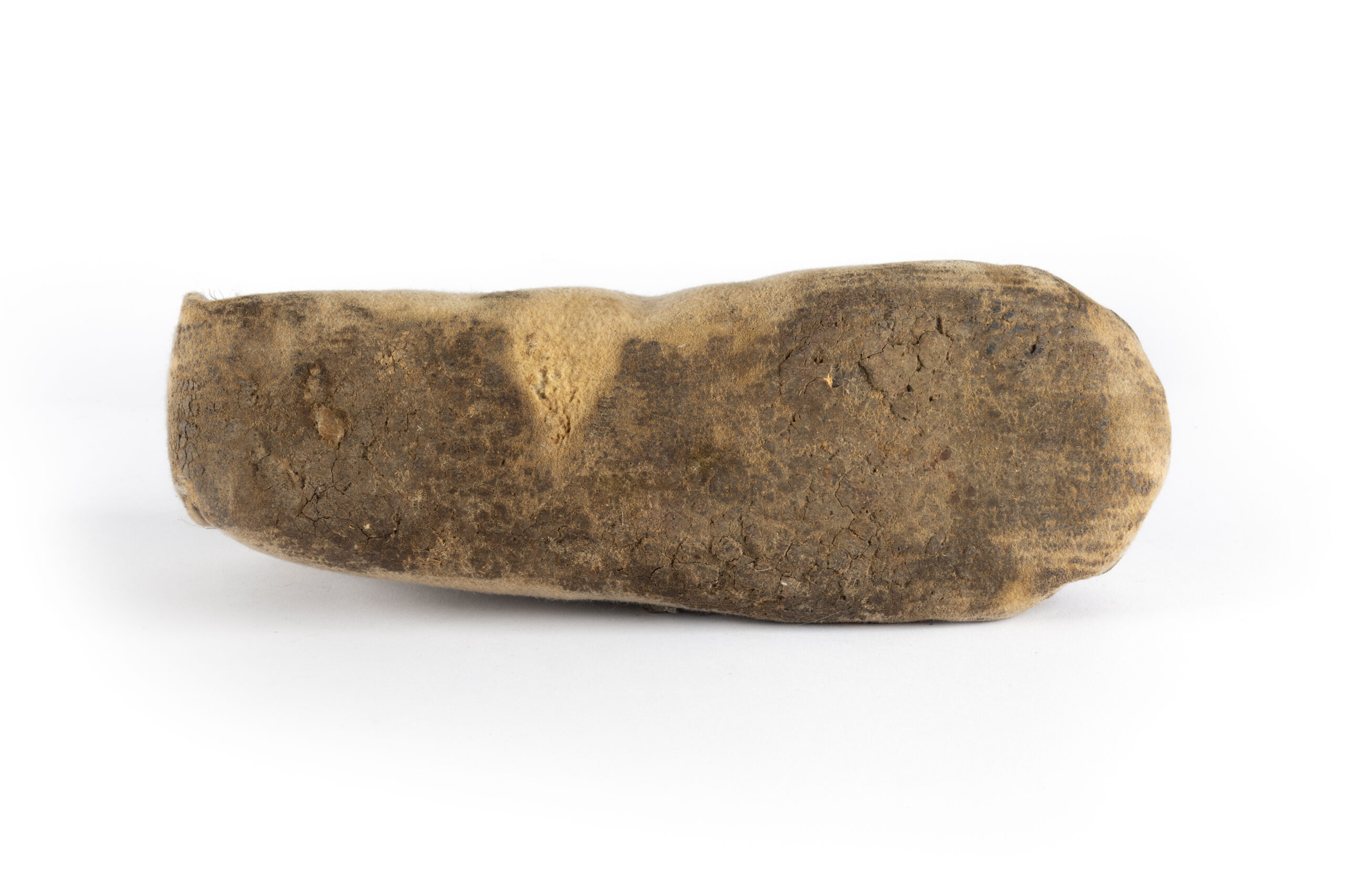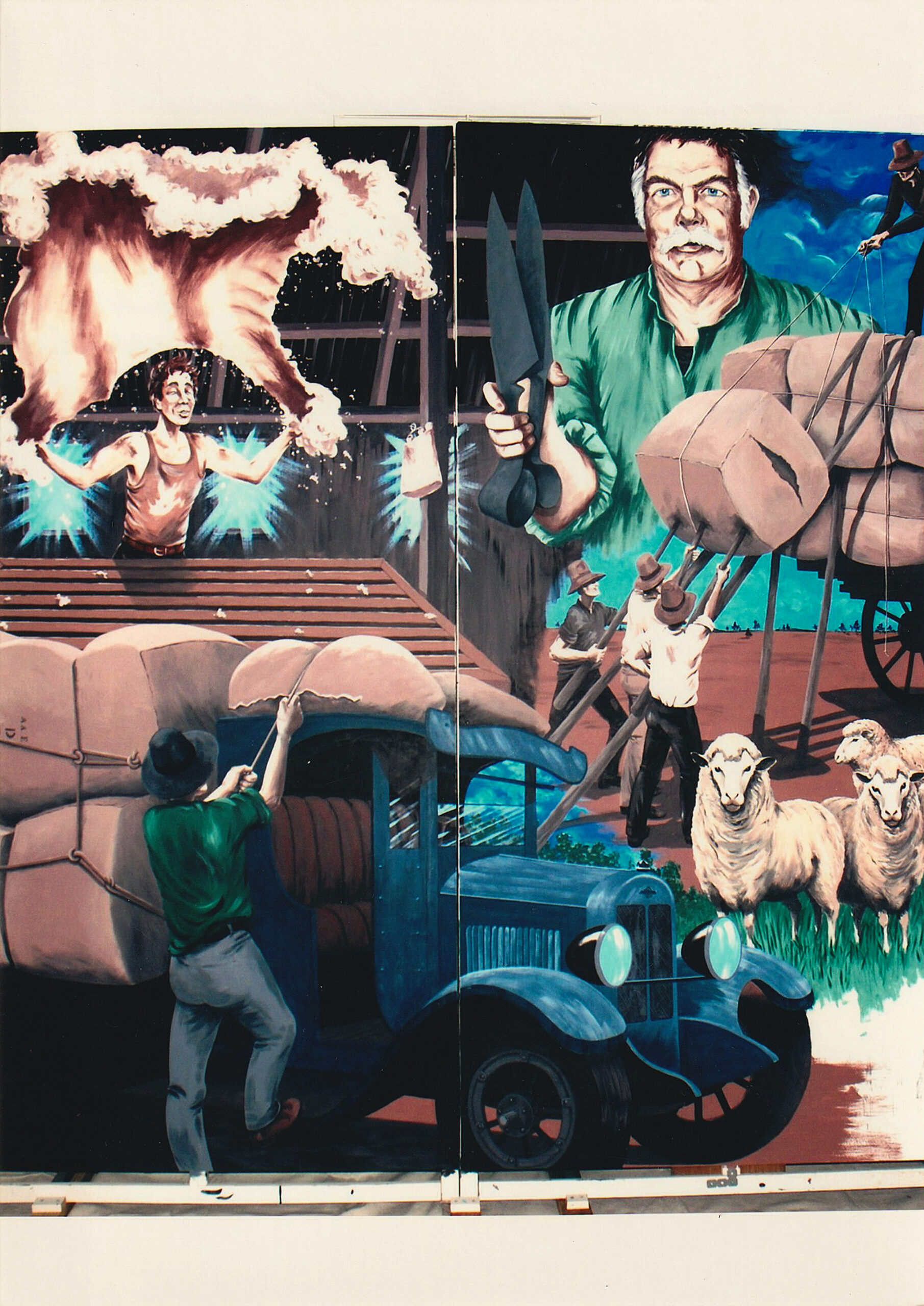Safety First
Personal Protective Equipment in the Shearing Shed
After initially taking time to breed sheep suited to the climate, the colony’s graziers had, by the 1840s, successfully crossbred merinos that met the British Empire’s relentless demand for high-quality wool. By the late 1800s, flock sizes had increased dramatically, and shearing sheds were hives of activity. Graziers introduced mechanised shearing to enhance productivity and boost yields. However these advancements brought a new challenge for the shearers—workplace safety.
Shearers worked in a dangerous environment. The shed floors were greasy with wool yolk (lanolin), which was secreted from the sebaceous glands of the sheep’s skin. The work surface was incredibly slippery, and shearers wore special boots without nails or seams in their soft soles to prevent slips and protect them from injuries. These boots, often homemade from repurposed wool-bale burlap, were more than just makeshift footwear—they were early personal protective equipment (PPE).
Handling sharp shears all day took a toll. Shearers risked cuts and infections, as well as long-term injuries like back pain and swollen wrists from the intense, repetitive labour. Any slip or drop of the shears, which were sharpened several times a day, could lead to a severe wound. The risk of tetanus from nail punctures or infections like anthrax, known at the time as wool sorter’s disease, was high. Even a minor cut could be a massive setback for transient seasonal workers living week-to-week on their paycheck, especially without today’s antibiotics.
While penicillin revolutionised treatment after WWII, shearers in the early days had to brave these occupational hazards daily. Protective moccasin-style boots like the ones pictured were essential, helping them stay safe and continue working in a punishing environment.



